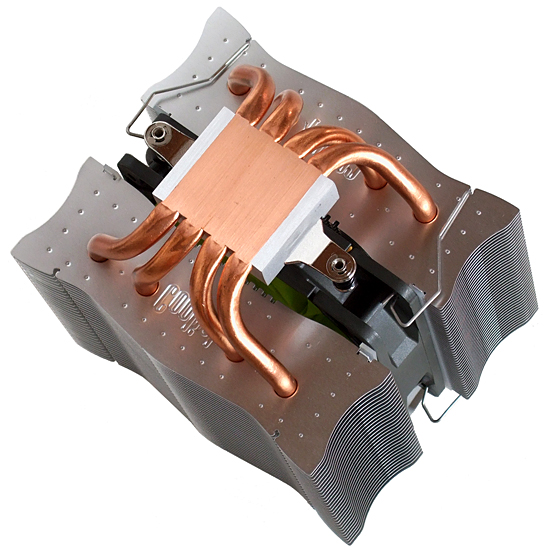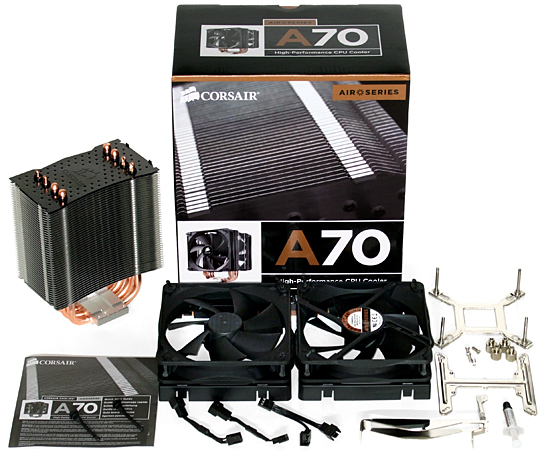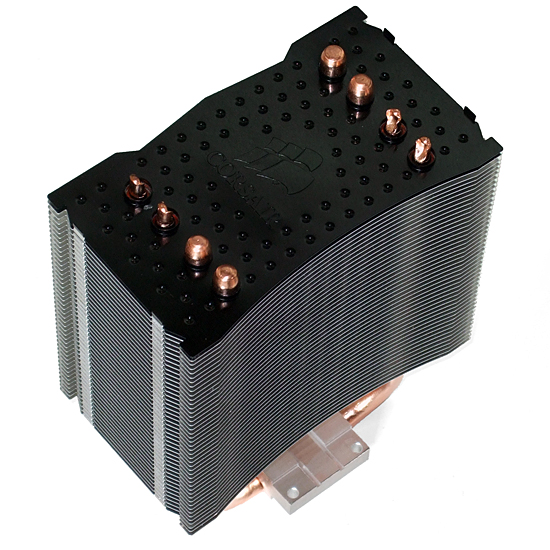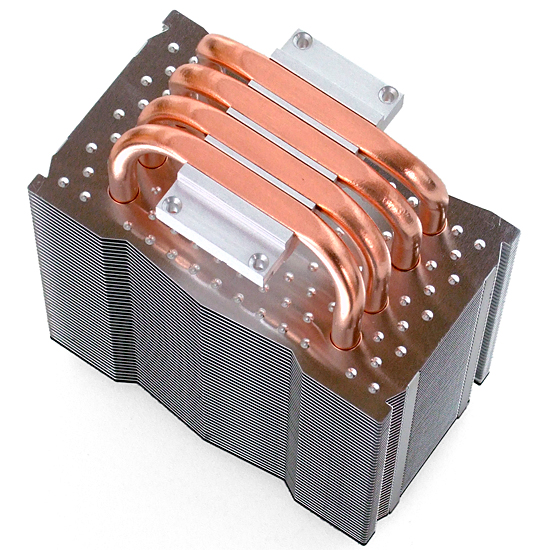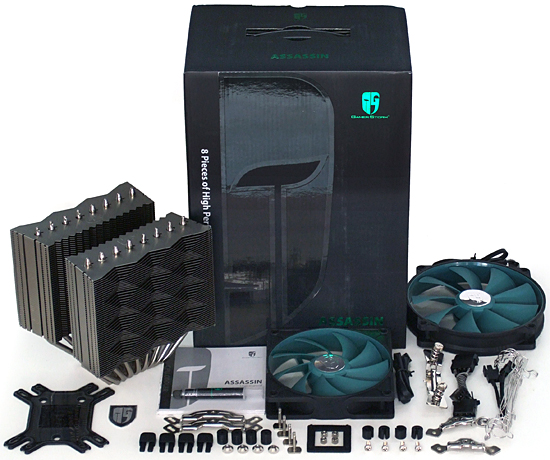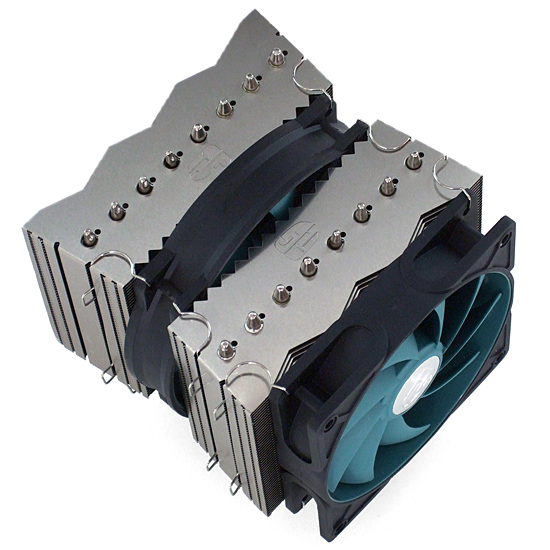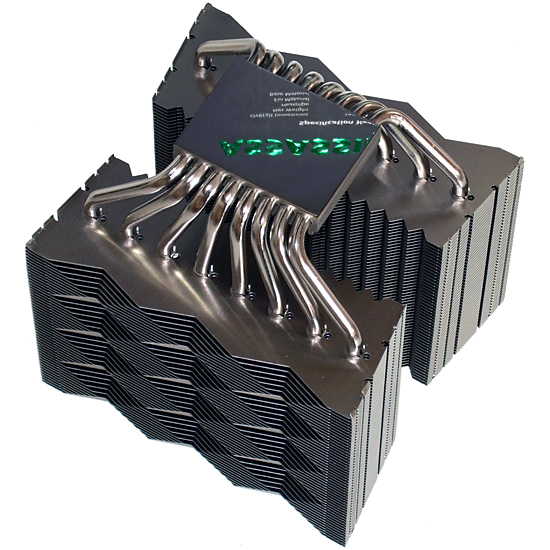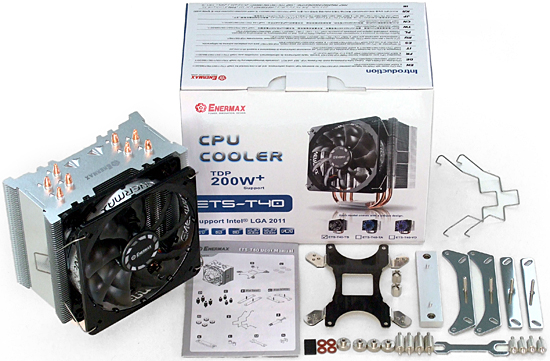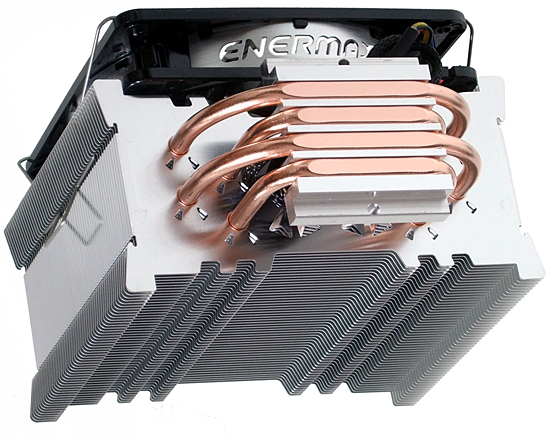In Pictures: 14 LGA 2011 Coolers For Your Core i7-3000 CPU
Do LGA 2011-based processors really need to be matched up to closed-loop liquid coolers? Not at all. We collected 14 different high-end heat sink kits able to do the job with air. Keep an eye out for our upcoming performance write-up, too!
The Base Of Both
Though many manufacturers promise increased cooling from their direct-contact heat pipe designs, we’ve only found these designs to lower the amount of time it takes to heat up and cool down (latent heat). We’ve even seen places where otherwise-similar coolers with solid bases have lower peak temperature under identical test conditions.
Coolink attempts to make the best of both designs by wedging concave copper inserts between semi-flattened heat pipes. Though the sanded base appears seamless (Coolink calls this Gapless Direct Touch), the intersection between heat pipe and copper inserts can be seen from the Corator DS’ side.
Corsair A70
Famous for its LGA 2011-compatible sealed liquid coolers, Corsair didn't update its family of air coolers for the new interface. The company instead relies on a rarely-discussed feature of LGA 2011 that allows certain coolers originally intended for LGA 1366 to fit.
Two fans are factory-installed to brackets for push-pull cooling, and Corsair even adds a fan splitter to allow a single motherboard connection. Unfortunately, the fans aren't of the PWM variety often required for firmware-based speed control. Silence-seekers who lack any other options may want to try the in-line resistors that Corsair bundles.
Bridging The Gap
Like the previously-discussed Akasa model, Corsair’s A70 sink is concave on one side to direct a larger volume of air down its center. A black top cover gives the A70 a subtler appears than most competing products.
Make Mine An Old-Fashioned
Because it centers on an older design, Corsair’s A70 doesn't follow the latest trend of smashing together heat pipes. The A70 instead has aluminum separating the pipes on its direct-contact base.
Deepcool (Gamerstorm) Assassin
The fanciest of today’s coolers came inside the simplest of boxes, along with an overwhelmingly-elaborate installation kit.
Get Tom's Hardware's best news and in-depth reviews, straight to your inbox.
The package is somewhat of a conundrum, mixing 140 mm, four-pin header (PWM) and 120 mm, three-pin (non-PWM) fans. Deepcool includes enough clips to add a third fan in push-pass-pull configuration, if you want.
3D Air Traps
Various manufacturers use different techniques to minimize the hot spot in the center of most heat sinks, which is caused by air leaking out the sides. Deepcool’s combination of 3D air pockets on the Assassin’s outer faces and tooth-shaped diverters on its inner faces is so unusual that it could be a unique solution.
Dual-tower coolers usually feel flimsy, but we firmed this one up by applying clips to both sides of its center fan.
Octopipes
The Assassin incorporates eight heat pipes within a heat spreader. Deepcool polishes the mating surface to a near-mirror finish before plating the pipe and plate assembly, which is shown reflecting the Assassin’s box.
Enermax ETS-T40
Enermax makes its ETS-T40 stand out from several value-oriented competitors by adding an aluminum band to its fan. That could give it an advantage over parts that perform similarly, especially amongst enthusiasts with windowed cases.
The installation kit covers both Intel and AMD platforms, and AMD users will even find that this unit fits in a proper cross-flow arrangement with most boards. A separate set of screws eliminates the need for LGA 2011's socket support plate.
Directional Pipe Design
A closer look at the ETS-T40’s heat sink reveals heat pipes arranged to force a larger portion of the fan’s air down the center. The fins are also designed to support dual-fan configurations in a push-pull arrangement, for which Enermax includes a second set of clips.
Smooth…Or Not
The ETS-T40's base follows the direct-contact heat pipe philosophy that’s now several years old, but improves it slightly with an ultra-smooth satin finish. Air gaps between the heat pipes and base still interrupt continuous contact, however.
